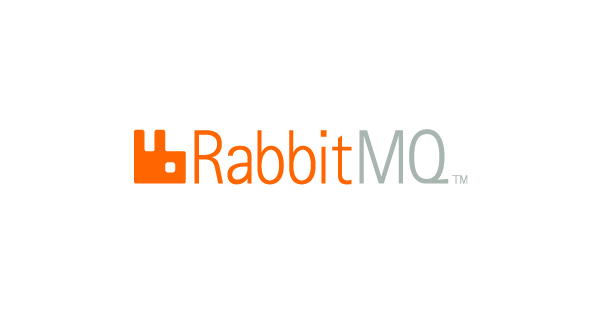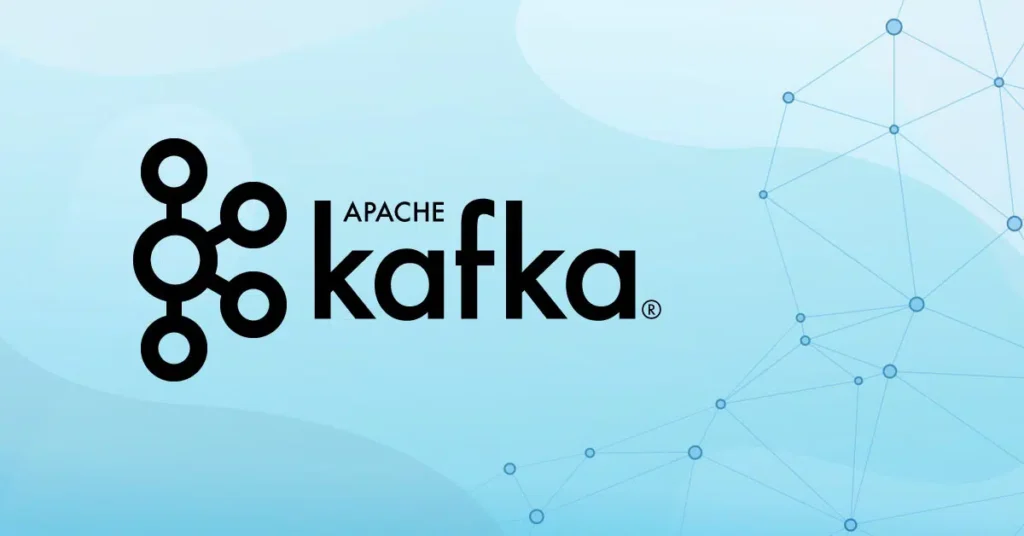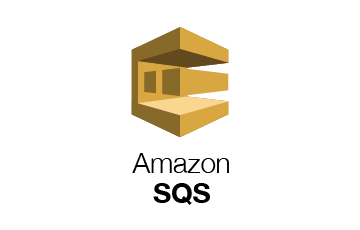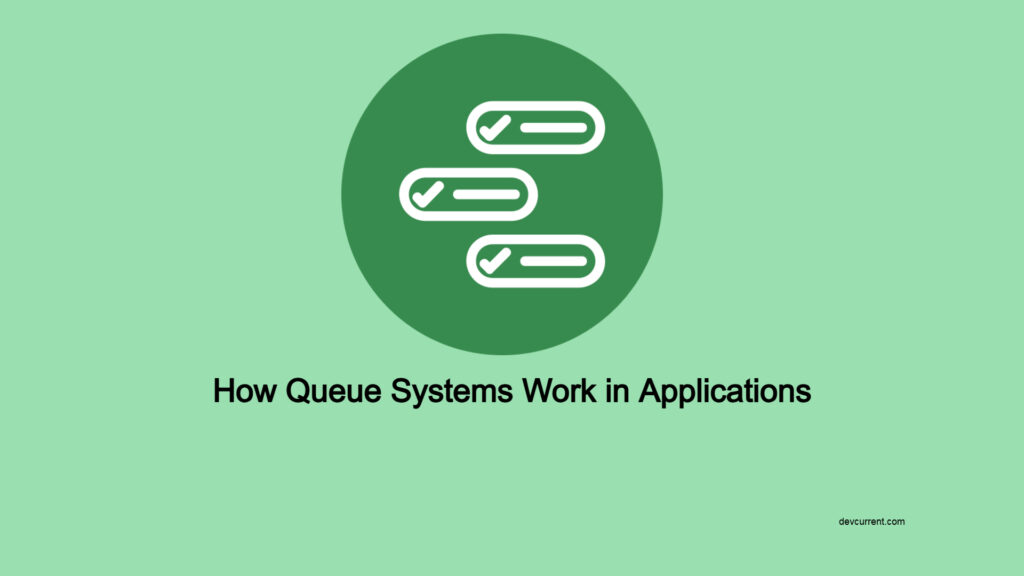In the ever-evolving world of software development, building applications that are scalable, reliable, and efficient is a top priority. One of the key technologies that make this possible is the queue system. Queue systems are indispensable for managing tasks, processing messages, and ensuring smooth communication between different parts of an application. Whether you’re handling background jobs like sending emails or processing real-time data streams, queue systems provide a robust solution. In this blog post, we’ll dive deep into how queue systems work in applications, why they matter, and explore popular examples like RabbitMQ, Apache Kafka, and Amazon SQS.
What is a Queue System?
At its simplest, a queue is a data structure that operates on the First In, First Out (FIFO) principle. Think of it like a line at a grocery store: the first person to join the line is the first to be served. In computer science, elements are added to the end of the queue (enqueued) and removed from the front (dequeued). In the context of applications, a queue system takes this concept and applies it to manage tasks, messages, or data that need to be processed in an organized manner.
Queue systems act as intermediaries, allowing different components of an application to communicate and operate independently. They store messages or tasks until they can be processed, ensuring nothing gets lost and everything happens in the right order (when required).
Why Are Queue Systems Important?
Queue systems are the backbone of many modern applications for several compelling reasons:
- Decoupling: They separate the producer of a task or message from the consumer, meaning one part of the application doesn’t have to wait for another to finish. This independence boosts responsiveness and flexibility.
- Scalability: By distributing tasks across multiple workers or servers, queue systems allow applications to handle increased workloads without breaking a sweat.
- Reliability: If a consumer crashes or a task fails, the queue holds onto the message until it can be processed successfully, reducing the risk of data loss.
- Asynchronous Processing: Time-consuming tasks—like generating reports, resizing images, or notifying users—can be offloaded to the background, keeping the main application fast and user-friendly.
For example, in an e-commerce platform, when a customer places an order, the system might need to process the payment, update inventory, and send a confirmation email. Without a queue, the user would have to wait for all these steps to complete. With a queue, these tasks are handled asynchronously, and the user gets an instant confirmation while the heavy lifting happens behind the scenes.
The Building Blocks of a Queue System
A queue system typically consists of three core components:
- Producers: These are the entities (e.g., a web server or a microservice) that generate messages or tasks and send them to the queue.
- Consumers: These are the workers or processes that retrieve messages from the queue and handle them, such as sending an email or updating a database.
- Queue: The storage layer that holds the messages until they’re ready to be processed. It acts as a buffer between producers and consumers.
In some systems, there’s also a broker, a middleman that manages the queue, ensures proper message delivery, and sometimes handles routing logic. This structure can be visualized as a simple flow: producers send messages to the queue, and consumers pull them out to process them, often with a broker overseeing the operation.
Types of Queue Systems
Queue systems come in different flavors, each suited to specific needs:
- Message Queues: These focus on communication between application components. They’re great for sending updates, events, or commands across services, ensuring reliable delivery.
- Job Queues: These are designed for task management, such as scheduling background jobs like data processing or file uploads. They prioritize execution over real-time messaging.
Both types can overlap in functionality, but their primary focus shapes how they’re used in applications.
Popular Queue Systems in Action
Let’s explore three widely adopted queue systems—RabbitMQ, Apache Kafka, and Amazon SQS—and see how they work, their strengths, and their real-world applications.
RabbitMQ: The Flexible Message Broker

RabbitMQ is an open-source message broker that excels in reliability and versatility. It supports multiple messaging protocols, with the Advanced Message Queuing Protocol (AMQP) being its cornerstone.
- How It Works: Producers send messages to an exchange, a routing mechanism that decides which queues the messages go to based on routing keys and bindings. Consumers then subscribe to these queues and process the messages. RabbitMQ offers several exchange types:
- Direct: Routes messages to a specific queue based on an exact match.
- Topic: Uses wildcards for flexible routing (e.g., “logs.*”).
- Fanout: Broadcasts messages to all bound queues.
- Headers: Routes based on message metadata.
- Key Features: Clustering for high availability, message acknowledgment, and support for complex routing scenarios.
- Use Cases: RabbitMQ shines in microservices architectures where services need to communicate reliably. For instance, a user registration service might send a message to a queue for an email service to send a welcome email.
Apache Kafka: The Data Streaming Powerhouse

Apache Kafka is a distributed streaming platform built for handling massive volumes of data in real time. It’s less of a traditional queue and more of a log-based system optimized for throughput and scalability.
- How It Works: Kafka organizes messages into topics, which are split into partitions for parallel processing. Producers publish messages to topics, and consumers subscribe to those topics to read the messages. Partitions are replicated across multiple brokers (Kafka servers) for fault tolerance. Unlike traditional queues, Kafka retains messages for a configurable period, allowing consumers to replay or process them later.
- Key Features: High throughput, low latency, partitioning for scalability, and replication for durability.
- Use Cases: Kafka is a go-to for big data applications like log aggregation (e.g., collecting server logs), stream processing (e.g., real-time analytics), and event sourcing (e.g., tracking user actions in an app).
Amazon SQS: The Simple, Scalable Solution

Amazon Simple Queue Service (SQS) is a fully managed message queuing service from AWS. It’s designed for ease of use and seamless integration with cloud-based applications.
- How It Works: Producers send messages to a queue, and consumers poll the queue to retrieve them. SQS abstracts the infrastructure, so you don’t need to manage servers or worry about scaling. It offers two queue types:
- Standard: High throughput with at-least-once delivery (messages might arrive out of order or be duplicated).
- FIFO: Guarantees exact ordering and exactly-once delivery, but with lower throughput.
- Key Features: Fully managed, pay-as-you-go pricing, and tight integration with AWS services like Lambda and EC2.
- Use Cases: SQS is ideal for serverless applications or decoupling components in the cloud. For example, a photo-sharing app might use SQS to queue image uploads for resizing.
Also Read: mastering-celery-best-for-scaling-python-apps
Real-World Examples of Queue Systems
Queue systems power countless applications across industries. Here are some practical scenarios:
- E-commerce Order Processing: When a customer buys a product, the order is sent to a queue. One consumer processes the payment, another updates the inventory, and a third sends a confirmation email—all without delaying the user experience.
- Social Media Updates: Posting a tweet or a status update triggers a message to a queue, which then notifies followers or updates feeds asynchronously.
- IoT Data Handling: Thousands of smart devices send sensor data to a queue, where it’s processed, analyzed, and stored without overwhelming the system.
These examples highlight how queue systems improve efficiency and responsiveness by offloading tasks to the background.
Challenges and Considerations
While queue systems are powerful, they come with challenges that developers must address:
- Message Delivery Guarantees: Ensuring messages aren’t lost or duplicated requires careful configuration. For instance, RabbitMQ and SQS use acknowledgments to confirm processing, while Kafka relies on consumer offsets.
- Ordering: Some applications (e.g., financial transactions) need strict message order. FIFO queues or Kafka’s single-partition topics can help, but they may sacrifice performance.
- Scalability: As traffic grows, the queue system must scale. Kafka’s partitioning excels here, while RabbitMQ and SQS may need clustering or additional queues.
- Security: Sensitive data in messages needs encryption and access controls. All three systems offer options like TLS and IAM policies to secure communication.
Choosing the Right Queue System
Picking the best queue system depends on your application’s needs:
- Throughput and Latency: Kafka is unmatched for high-speed, large-scale data processing.
- Ordering Requirements: SQS FIFO or RabbitMQ with proper setup ensures strict order.
- Ease of Use: SQS is the simplest, with no infrastructure to manage.
- Complexity: RabbitMQ handles intricate routing, while Kafka is overkill for small tasks.
- Ecosystem: AWS users might lean toward SQS, while open-source fans might prefer RabbitMQ or Kafka.
Sometimes, combining systems (e.g., Kafka for streaming and SQS for simple tasks) makes sense for complex applications.
Implementing a Queue System
Let’s walk through the steps to integrate a queue system into an application, along with a simple example.
Steps to Implement
- Select a Library: Use the queue system’s SDK or client library (e.g., Pika for RabbitMQ, Kafka-Python for Kafka, Boto3 for SQS).
- Configure the Queue: Define queues, exchanges, or topics based on your needs.
- Write Producers and Consumers: Code the logic to send and process messages.
- Handle Errors: Implement retries or dead-letter queues for failed messages.
- Monitor Performance: Track queue length, latency, and consumer health.
Example: RabbitMQ in Python
Here’s a basic example using the Pika library to send and receive a message:
import pika
# Producer: Send a message
connection = pika.BlockingConnection(pika.ConnectionParameters('localhost'))
channel = connection.channel()
channel.queue_declare(queue='tasks')
channel.basic_publish(exchange='', routing_key='tasks', body='Process this task!')
print("Message sent")
connection.close()
# Consumer: Receive a message
def callback(ch, method, properties, body):
print(f"Received: {body.decode()}")
connection = pika.BlockingConnection(pika.ConnectionParameters('localhost'))
channel = connection.channel()
channel.queue_declare(queue='tasks')
channel.basic_consume(queue='tasks', on_message_callback=callback, auto_ack=True)
print("Waiting for messages...")
channel.start_consuming()
This code sets up a simple queue called “tasks,” sends a message, and listens for it. Similar setups work for Kafka and SQS with their respective libraries.
Conclusion
Queue systems are a game-changer for modern applications, enabling decoupling, scalability, and asynchronous task handling. Whether you choose RabbitMQ for its routing finesse, Kafka for its streaming prowess, or SQS for its simplicity, understanding how these systems work unlocks new possibilities for building robust software. From e-commerce to IoT, queue systems are everywhere, quietly making our digital world faster and more reliable.
Ready to supercharge your application? Dive into RabbitMQ, Kafka, or SQS, and see how they can transform your development workflow.

